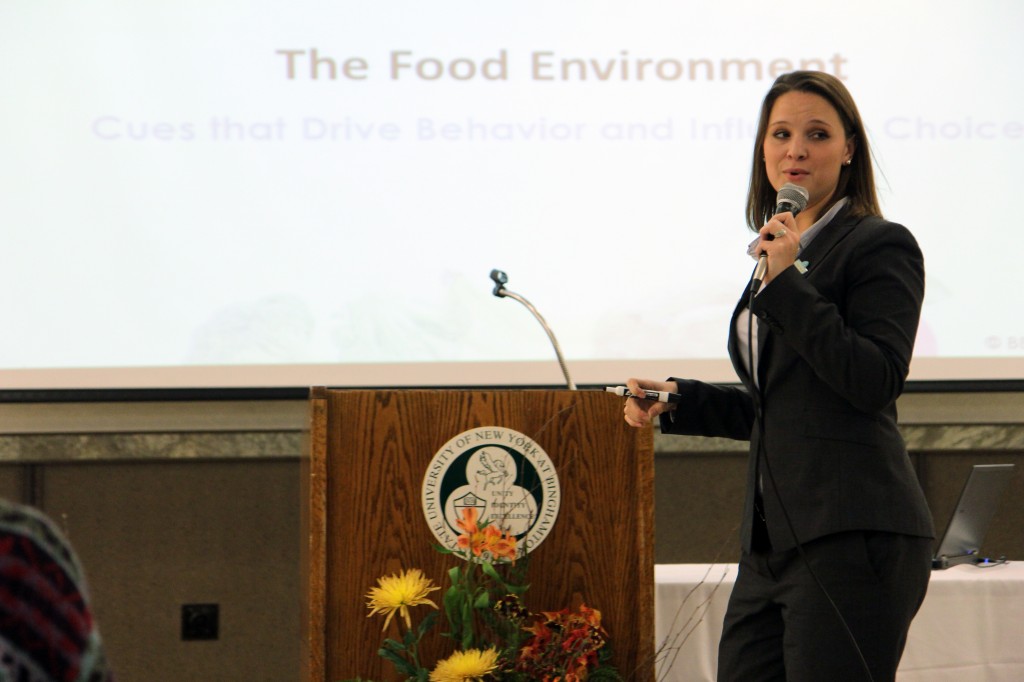
Binghamton University students were given some food for thought Saturday afternoon.
Following the release of details about the upcoming University Union Food Court, the Eating Awareness Committee hosted an interactive presentation called “The Food Environment” at the Old Union Hall.
The program, which was part of the Healthy Campus Initiative and was co-sponsored by the Eating Awareness Committee, Sodexo and Campus Recreation, featured guest speaker Kathryn Hoy, a Cornell Food and Brand Lab researcher and manager of the Center for Behavioral Economics in Child Nutrition Programs (BEN).
Hoy addressed “drive behaviors” and cues that might play a role in influencing dietary choice, and discussed how psychology and the environment impact eating behavior.
She said that everything — from what and how much we eat, to whether or not we enjoy it — is affected by cues all around us. These include choice architecture, behavior economics and portion control.
“As we age, we tend to develop certain consumption patterns, and we’re not really comfortable veering from that,” Hoy said. “We tend to rebel against threats on our freedom — if we’re not given a choice.”
She explained how implementing “choice architecture” might help combat stubborn attitudes toward new dietary options. Choice architecture describes giving the illusion of choice, while actually choosing between equally valued items.
“You can eat a carrot or celery; either way you’re going to eat a vegetable,” Hoy said.
Sarah Thompson, a faculty member of health and wellness studies and chair of the Eating Awareness Committee, said she hopes that future outreach programs such as “The Food Environment” will heighten awareness about ways to be healthy on campus.
Alexa Schmidt, a dietician for Sodexo, said she wanted to dispel negative stigmas on Sodexo’s limited healthy options, especially claims that Sodexo doesn’t offer sufficient vegan and vegetarian options.
“There are wellness options at each of the food stations,” Schmidt said. “For example, the grill — people always say there are no healthy options, but if you actually go to the grill and take a look, there are regular omelets, there are egg white omelets, there’s turkey burgers and grilled portobello mushrooms.”
Thompson believes that Binghamton University is overall a health-conscious campus, but students could be more aware of how to navigate through the dining halls’ displays and find the healthy options.
“In terms of behavior economics, [the dining halls] are definitely designed to sell,” Thompson said.
Hoy talked about how important it is to create a dining environment that will encourage healthier eating options.
“We need to make food and environments much more cool for those consumption patterns to be much more interactive,” Hoy said.


